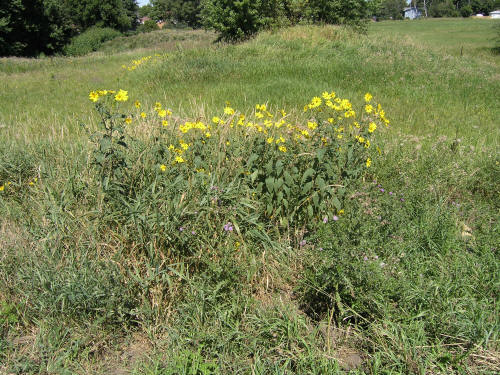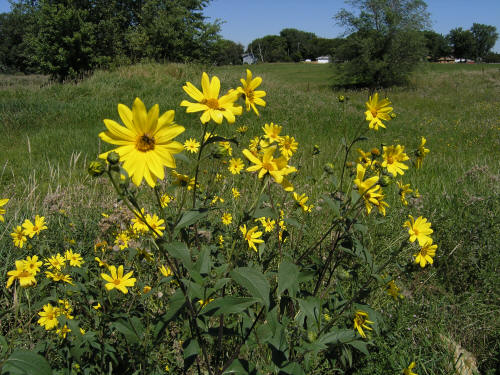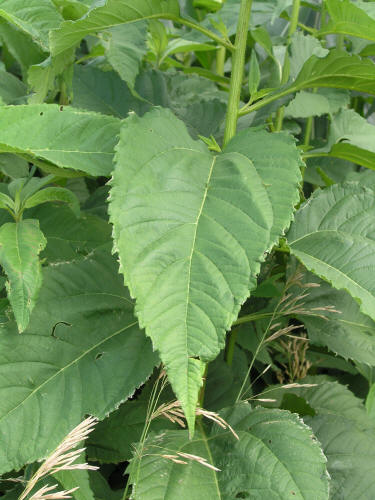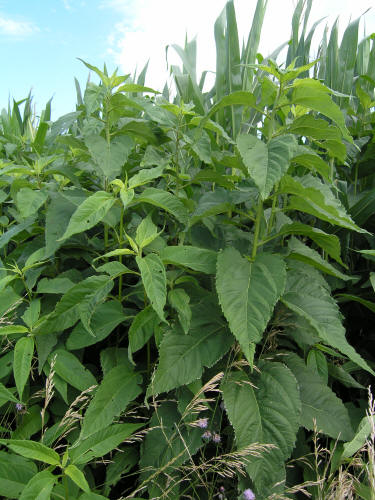Go to Midwest Weeds and Wildflowers Home Page
(updated May 17, 2021)
Jerusalem Artichoke
Helianthus tuberosus L.
Asteraceae (Aster Family)
▲ colony along a road in Minnesota

▲▼ colony in a fallow field in Ohio

▲▼ flowers (head inflorescences)
▲▼ flowers (head inflorescences)
▲▼
▲▼ flowers (head inflorescences)

▲▼ leaves and stems

▲ growing in corn in Indiana
▲▼ stems with rough hairs
Helianthus tuberosus
L., Jerusalem Artichoke:
(Bayer
Code:
HELTU; US Code HETU)
·
U.S. native creeping perennial, rhizome-producing wildflower that produces
thickened, branched tubers late each growing season; stems are 2-8 feet tall
or more, usually with unbranched (except in upper portions as flowering
commences), ridged, red-green to purplish ridged stems; stems have stiff
white hairs and are rough textured
·
Leaves are alternate (sometimes opposite, particularly toward base of
plant), lanceolate, usually with toothed margins and a pointed tip; leaves
have winged petioles and 3 main veins that initiate a short distance above
where the petiole joins the leaf; upper leaf surface is rough-textured;
lower surface is soft hairy
·
Head inflorescences are 2.5-3.5 inches in diameter, produced at stem tips,
with 10-20 yellow ray florets (“petals”) that are puckered where they join
the head, and 60 or more yellow disk florets
·
Bracts below the head are in overlapping rows, lanceolate, with long,
tapering, pointed tips; bracts edged with fine hairs
·
Flowering from late summer through autumn
·
Prefers full-sun, pastures, prairies, right-of-ways; is also cultivated for
its edible root; has become naturalized in Europe
·
The stiff white stem hairs, opposite leaves and alternate leaves on the same
plant, and winged petiole with the 3 main veins starting above the leaf base
help identify this species, along with its tubers; this sunflower species
also hybridizes with other perennial and annual species, which can cause
some real confusion in identification